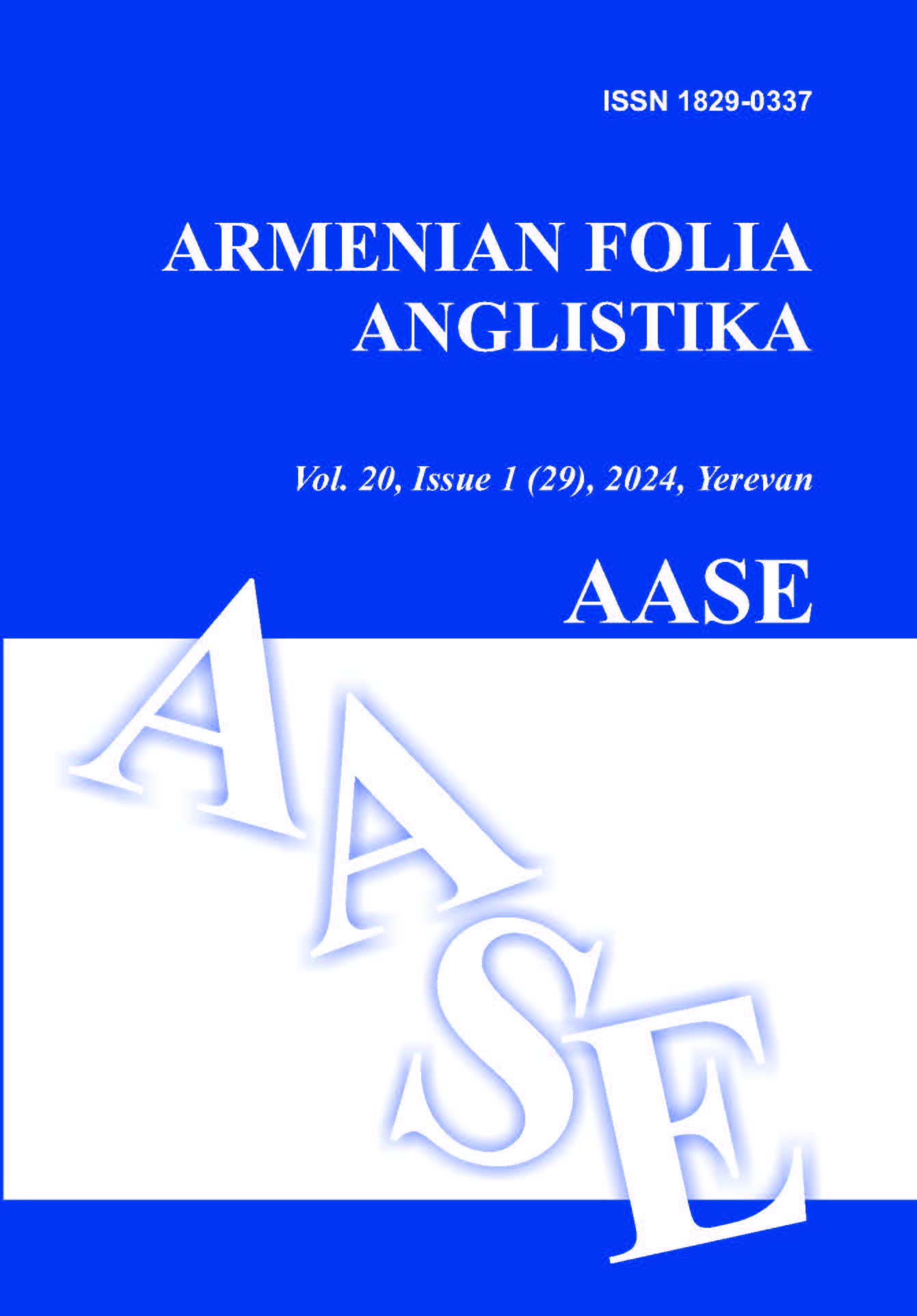ON SOME LINGUISTIC FEATURES OF COMMUNICATION IN DIPLOMACY
DOI:
https://doi.org/10.46991/AFA/2024.20.1.93Keywords:
diplomatic discourse, diplomatic communication, ambiguity and mitigation strategies, international relationsAbstract
The article provides an insight into diplomatic language through the discussion of the language choices in James Cleverly’s and Annalena Baerbock’s speeches. The diplomats’ main weapon is their language. Diplomats speak a lot and give little information. Diplomatic communication is based on the use of various strategies and tactics. The most common ones include: the strategy of “ambiguity”, the strategy of “mitigation”, the tactics of euphemistic substitution, the subjectivity of assessment and communicative tolerance. The main purpose of these strategies is to maintain one’s own interests and create a positive tone of communication. The aim of the study and the specifics of the data chosen determine the choice of the following research methods in the study of diplomatic discourse: the method of direct observation of the material, followed by analysis and generalization of the results, contextual-interpretive and content analysis methods, as well as methods of linguistic description.
Downloads
References
Barston, R.P. (1988). Modern diplomacy. London, New York: Longman.
Berridge, G.R. (2015). Diplomacy: theory and practice. London: Palgrave Macmillan.
Empson, W. (1973). Seven types of ambiguity. London: Penguin.
Jervis, R. (1978). Cooperation under the security dilemma. World Politics, vol. 30, Cambridge University Press.
Bykova, O.N. (1999). Language manipulation. Moscow: Nauka (in Russian).
Voyevodin, A. R. (2000). Stratagemy. Strategii vojny, biznesa, manipuljacii, obmana [Strategies of war, manipulation, deception]. Krasnoyarsk: Ural (in Russian).
Dotsenko, Ye. A. (1996). Psychology of manipulation. Moscow: Al'fa (in Russian).
Issers, O. S. (2008). Communicative strategies and tactics of Russian speech. Moscow: LKI (in Russian).
Israyelyan, V․ L․ (1990). Diplomats face to face․ Moscow: Mezhdunarodnyye otnosheniya (in Russian).
Karaulov, Yu. N. (1987). Russian language and linguistic personality. Moscow: Nauka (in Russian).
Kovalov, A. (1996). ABC of diplomacy. Moscow: Interpraks (in Russian).
Trager, R. F. (2017). Diplomacy: communication and the origins of international order. Cambridge: Cambridge University Press.
Sources of Data
Baerbock, A. (2023, January 24). Speech at the Parliamentary Assembly of the Council of Europe. Federal Foreign Office.
Cleverly, J. (2023, February 20). General debate on Ukraine, 20 February 2023: Foreign Secretary's opening statement. GOV. UK.
Cleverly, J. (2022, December 12). British foreign policy and diplomacy: Foreign Secretary’s speech. GOV. UK.
Cleverly, J. (2022, November 19). Manama Dialogue 2022 in Bahrain: Foreign Secretary's speech. GOV. UK.
Cleverly, J. (2022, September 29). Indo-Pacific tilt: Foreign Secretary’s speech, September 2022.GOV.UK
Cleverly, J. (2020, June 24). Statement by the Rt Hon James Cleverly MP at the Security Council briefing on the Middle East Peace Process. In PolicyMogul.
Downloads
Published
Issue
Section
License
Copyright (c) 2024 Author(s)

This work is licensed under a Creative Commons Attribution-NonCommercial 4.0 International License.














